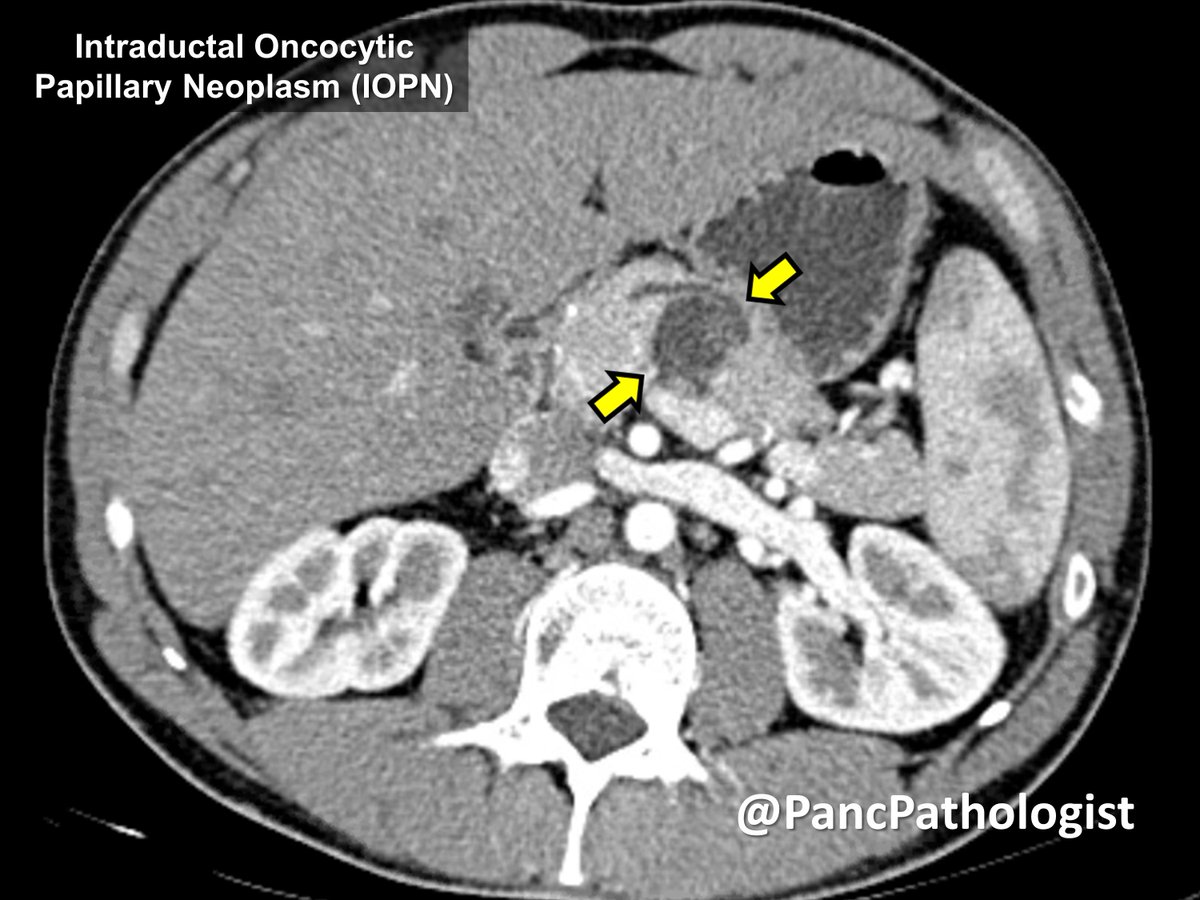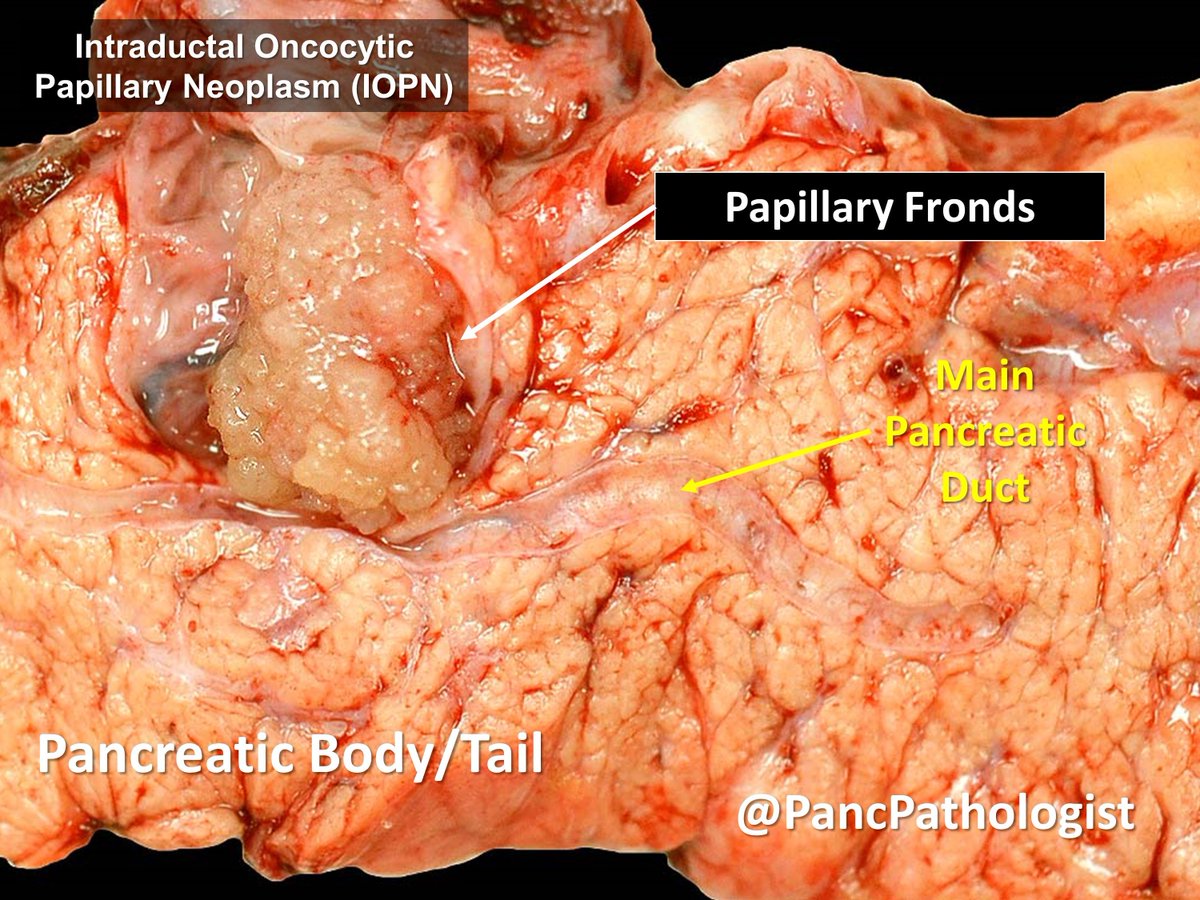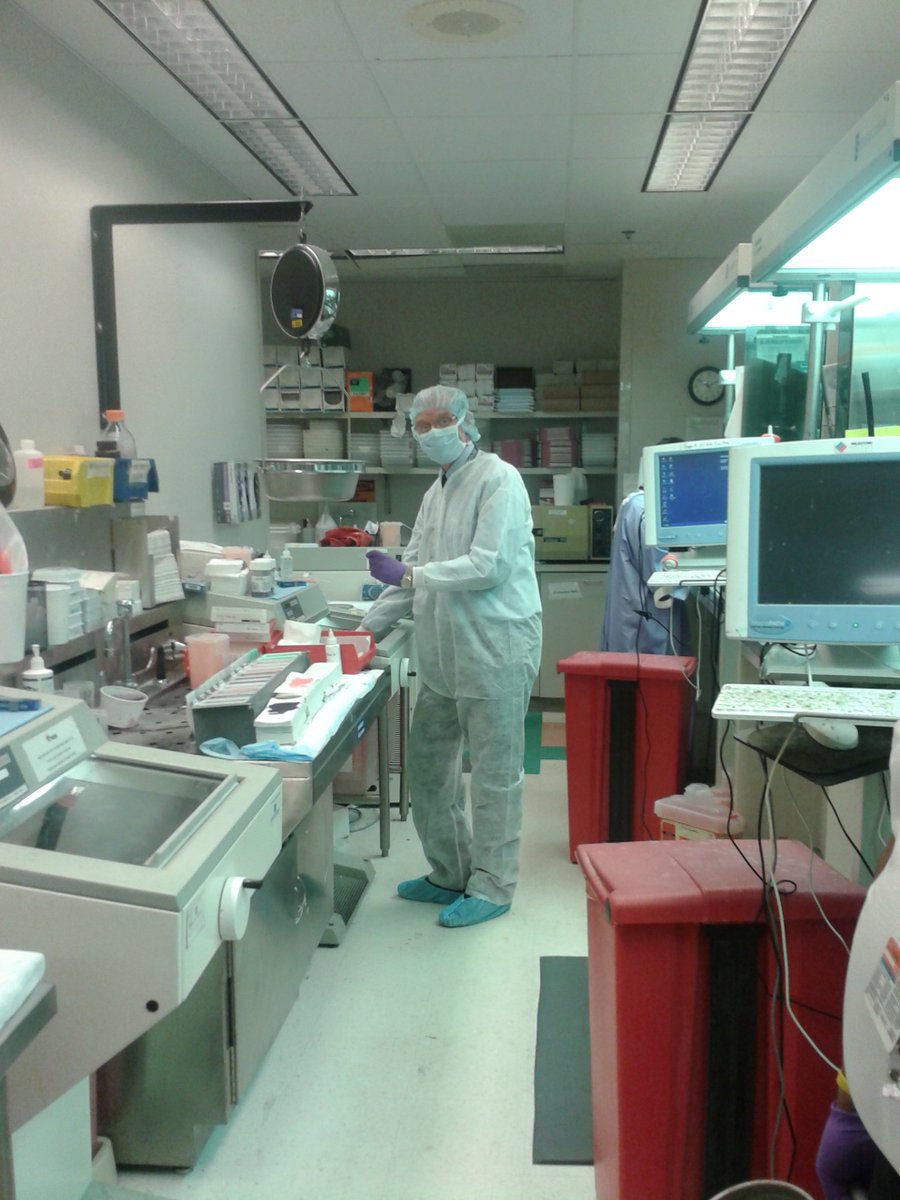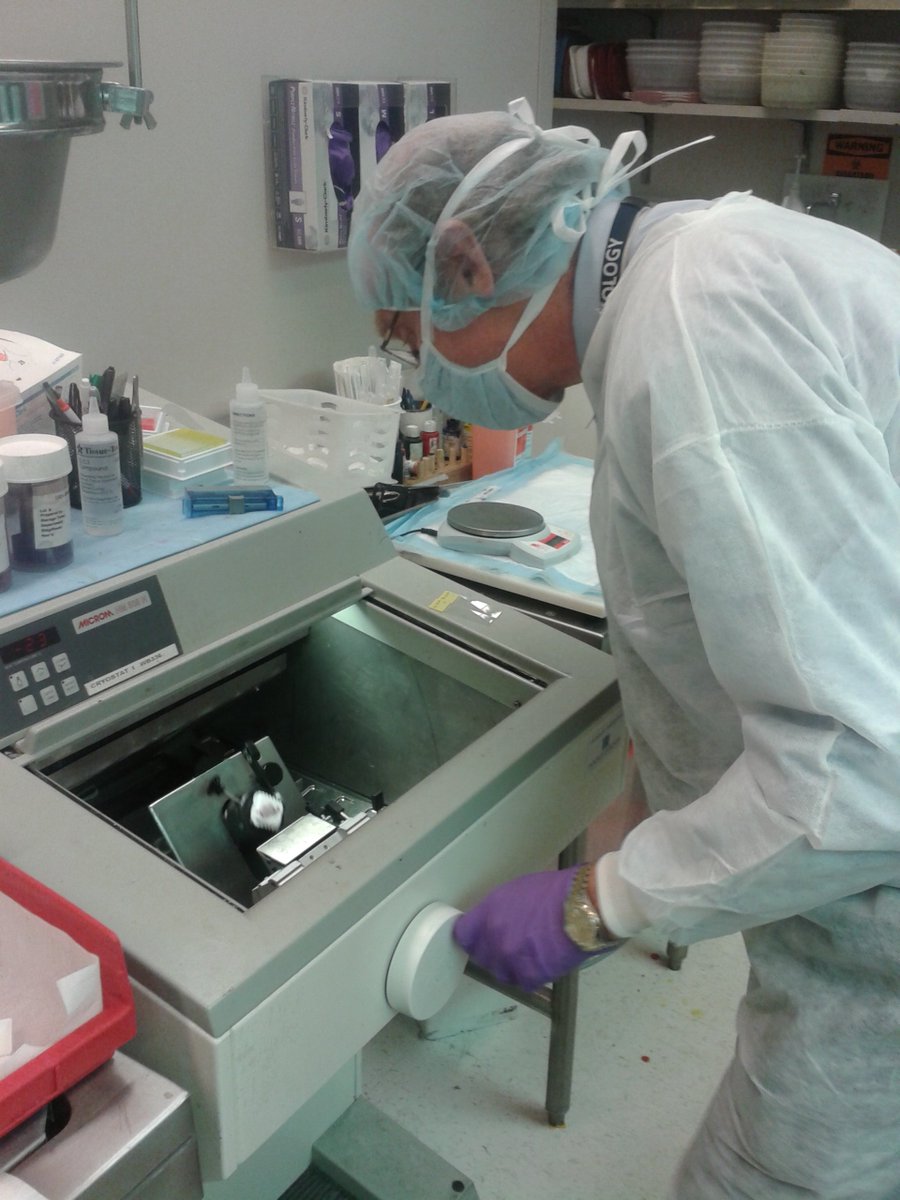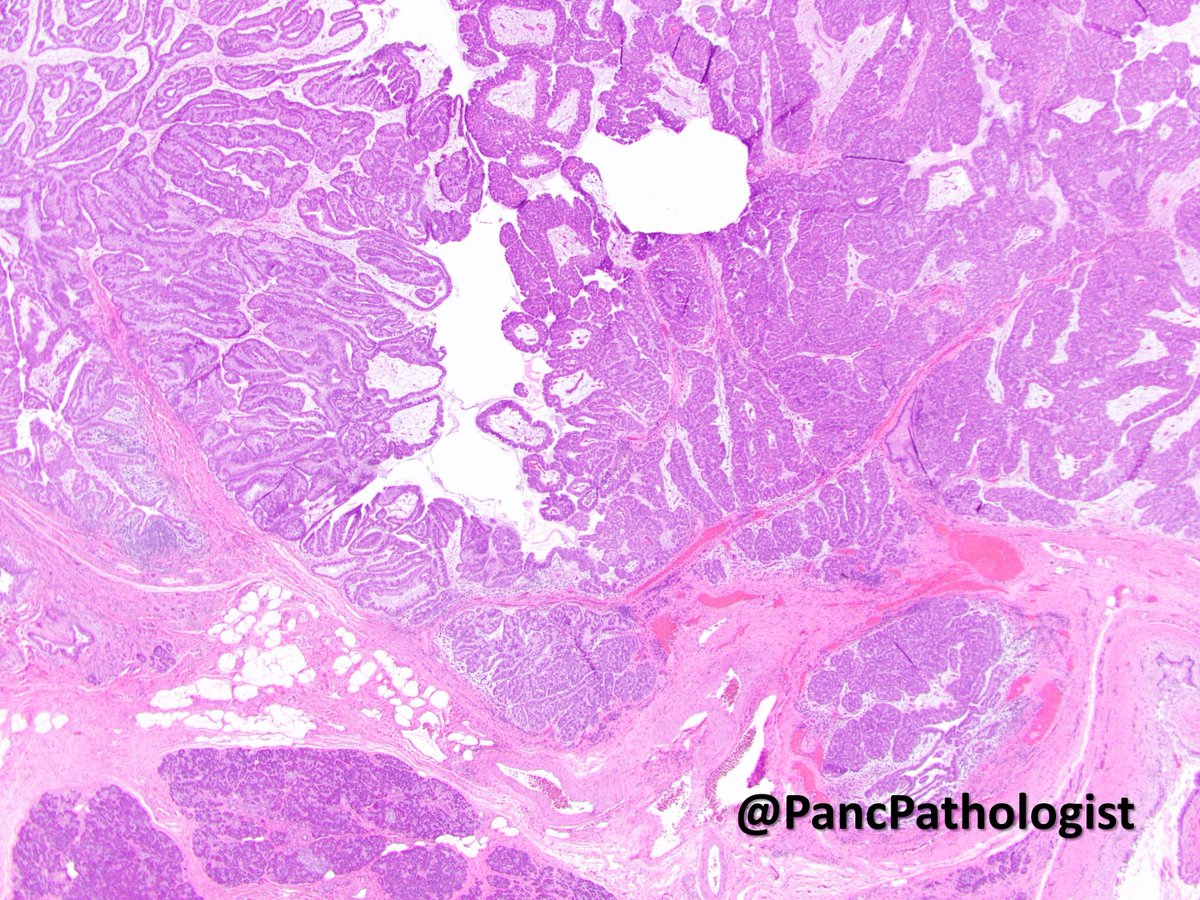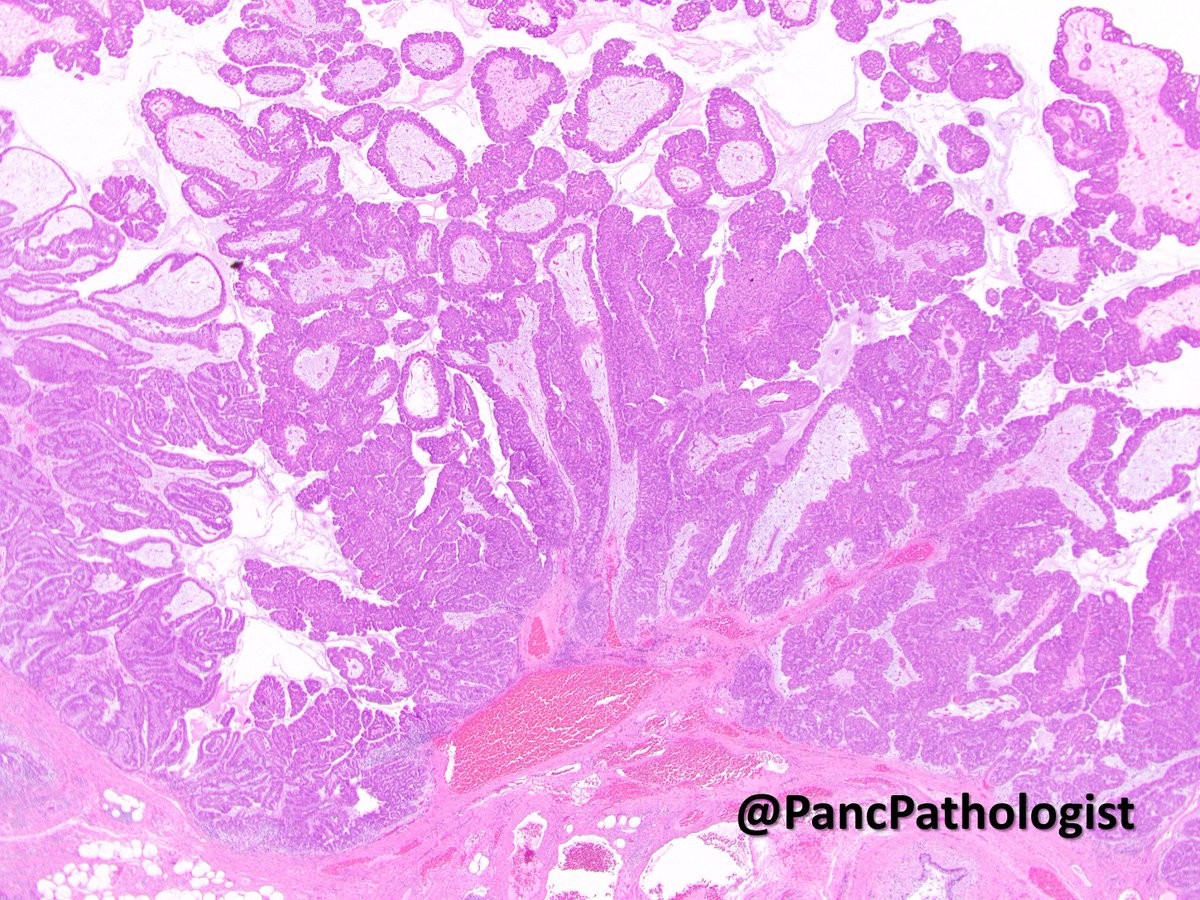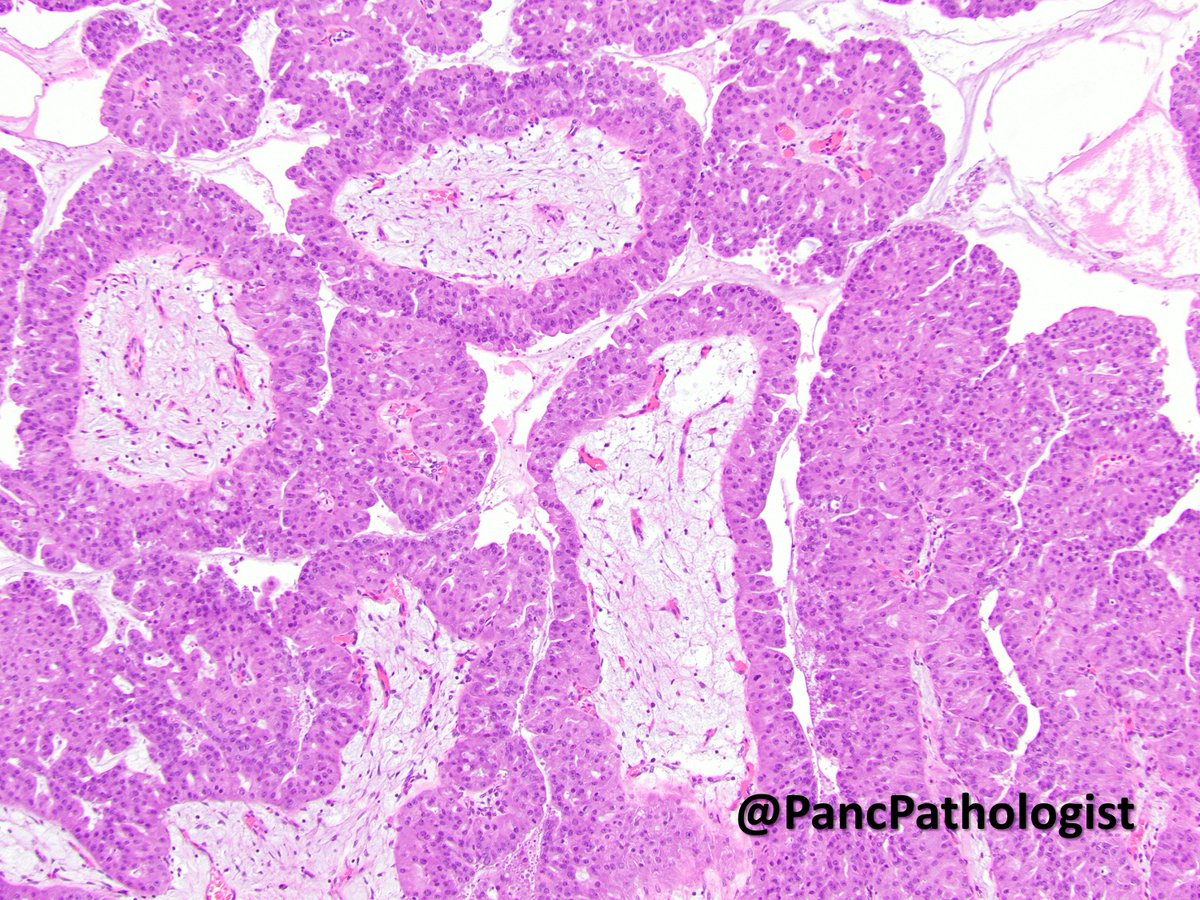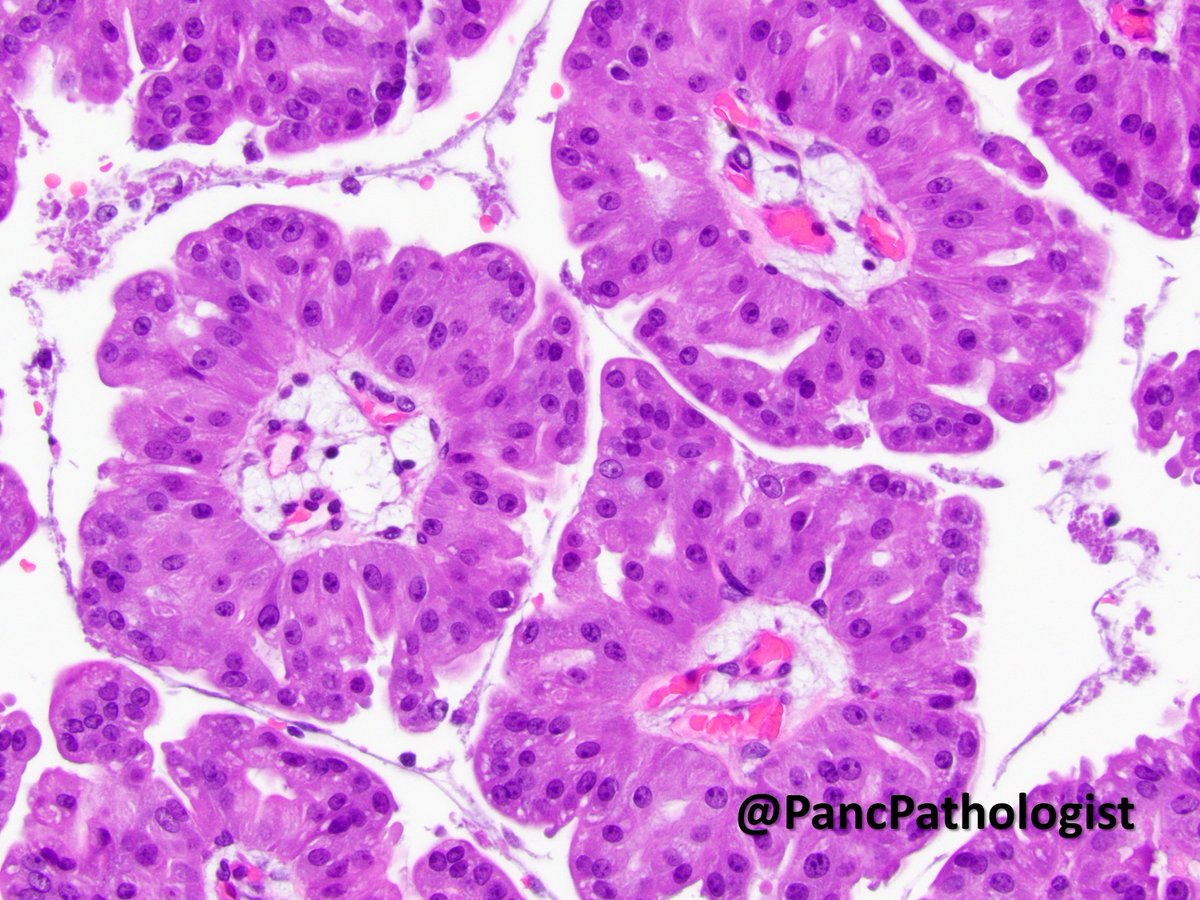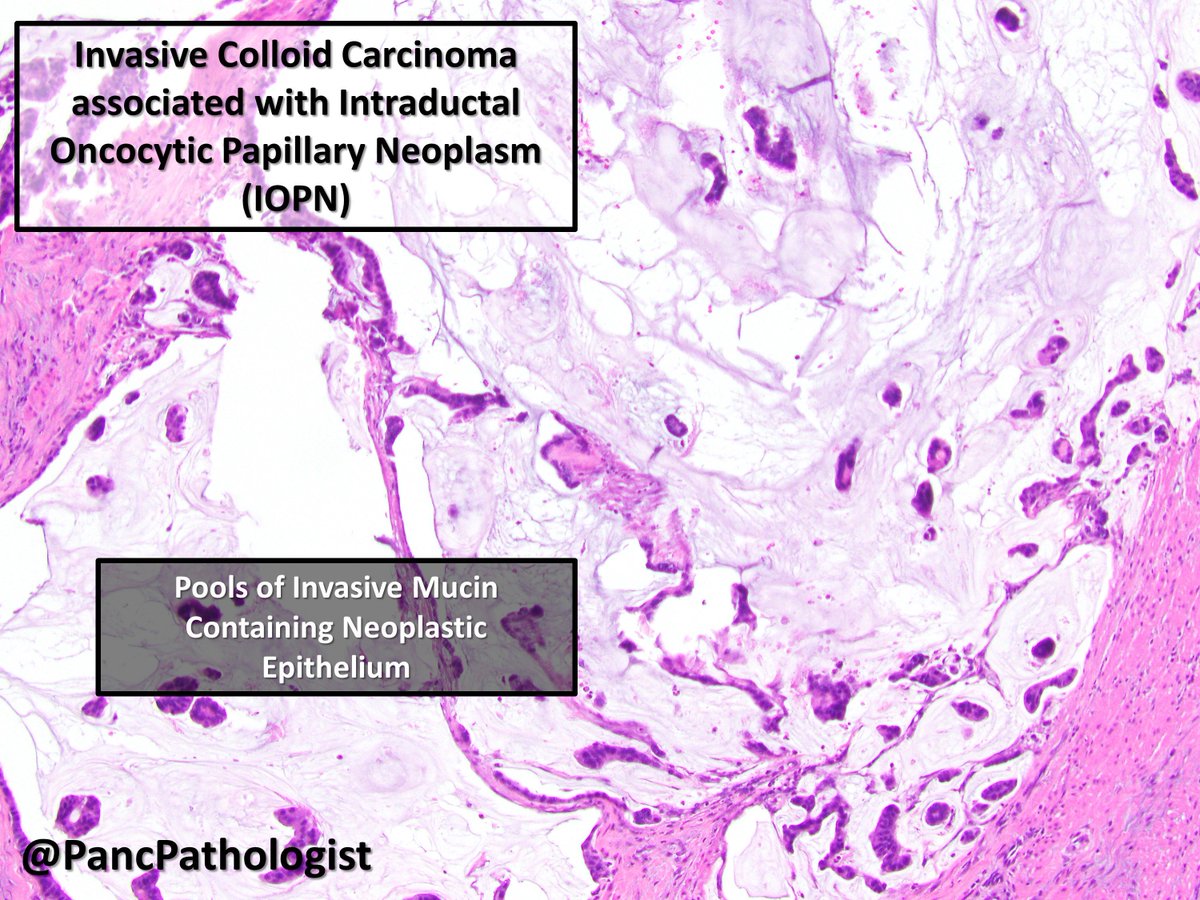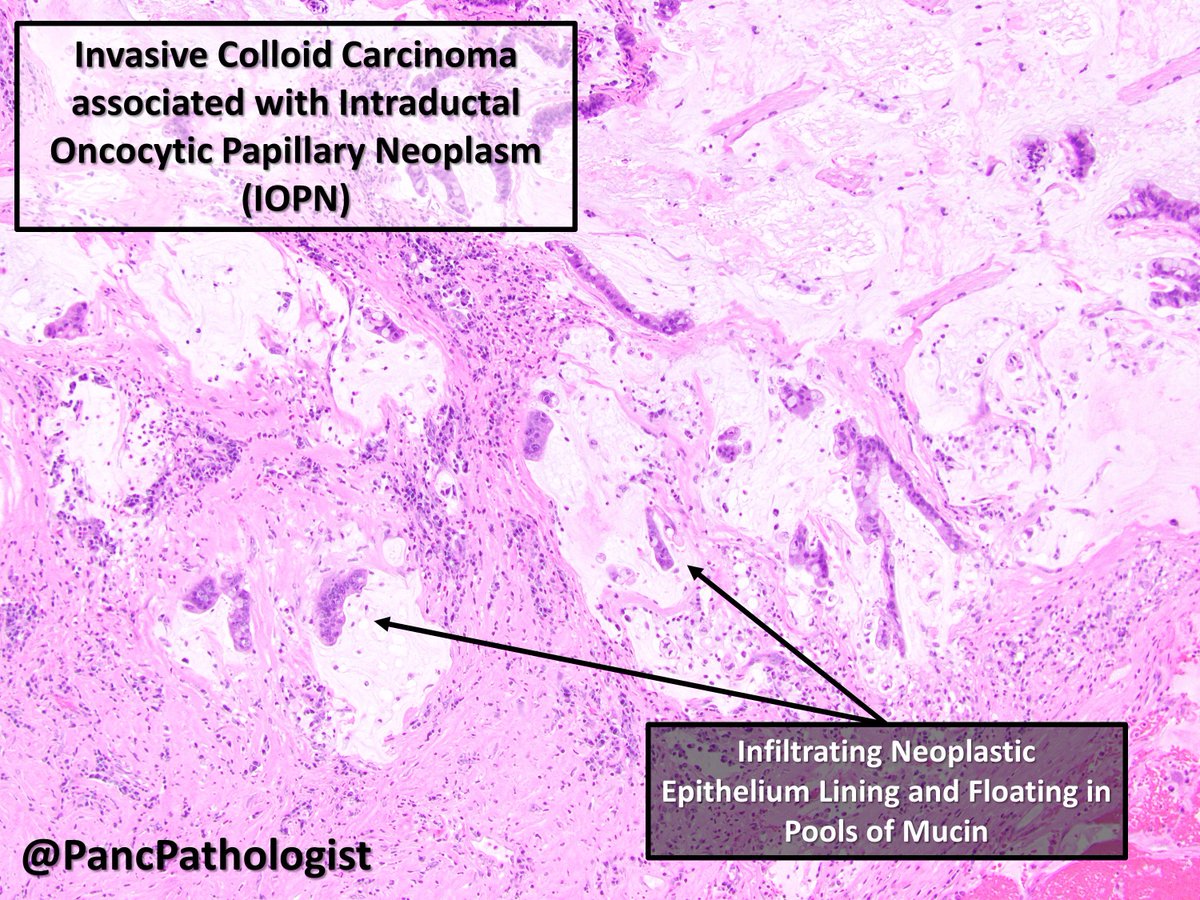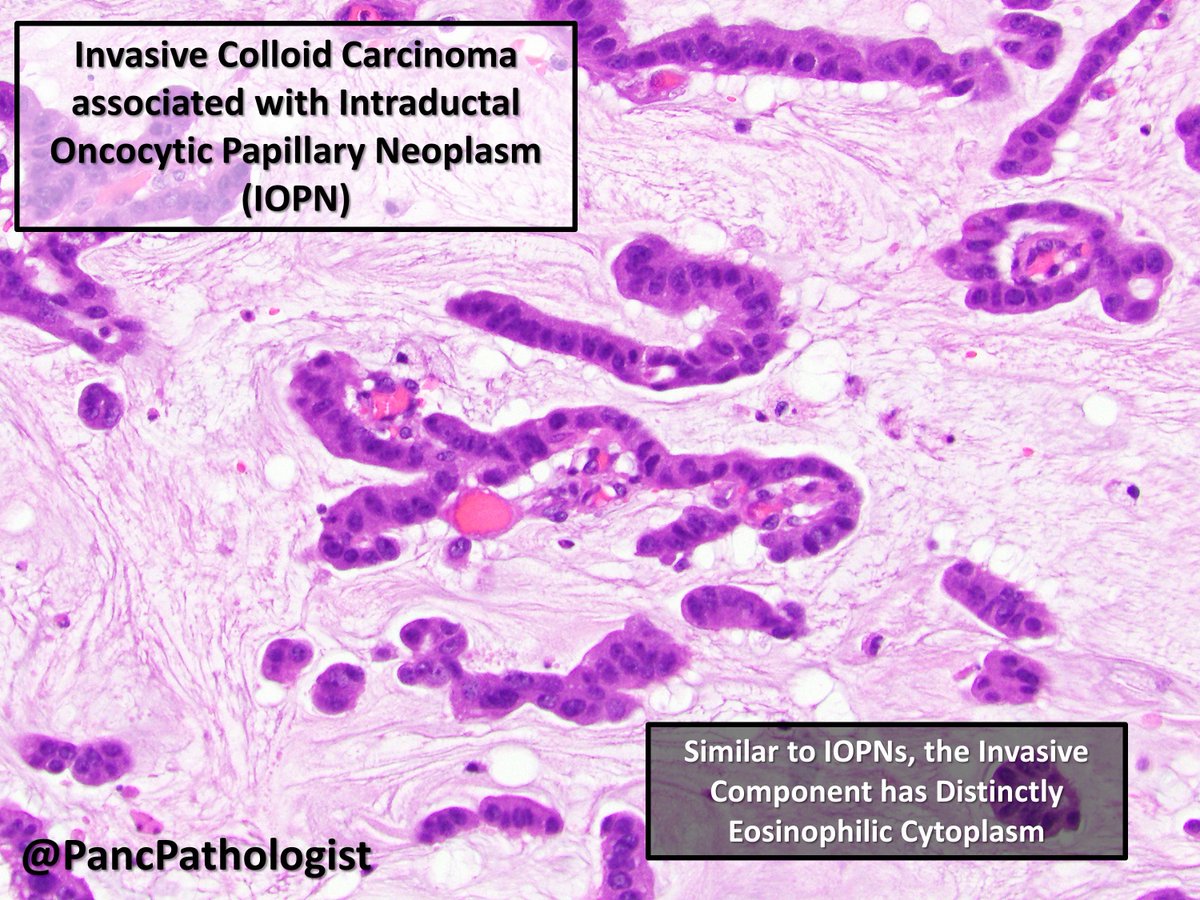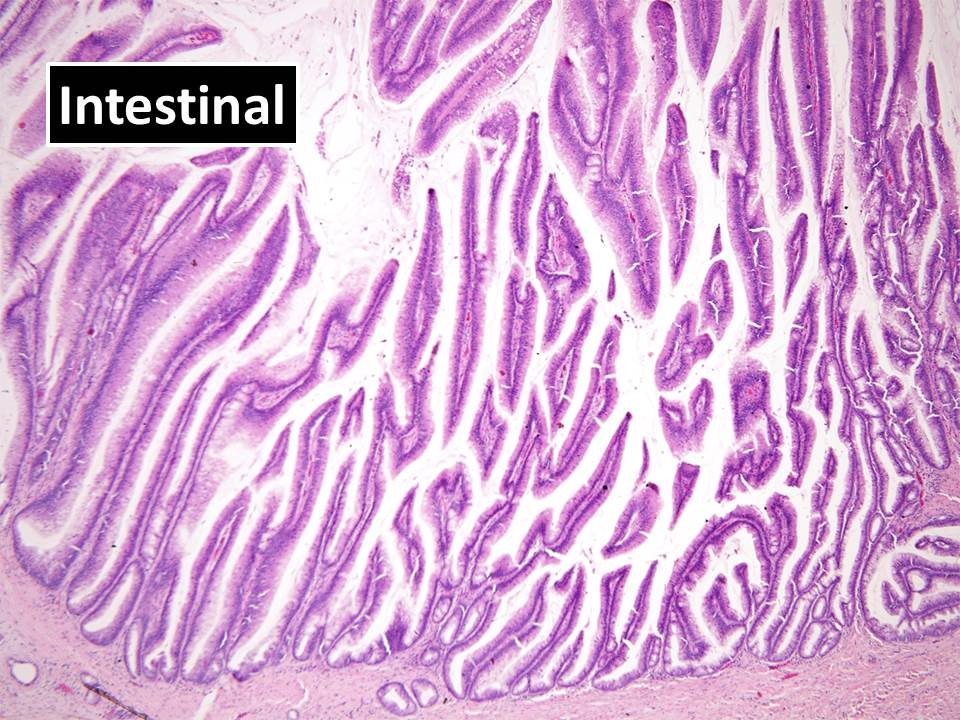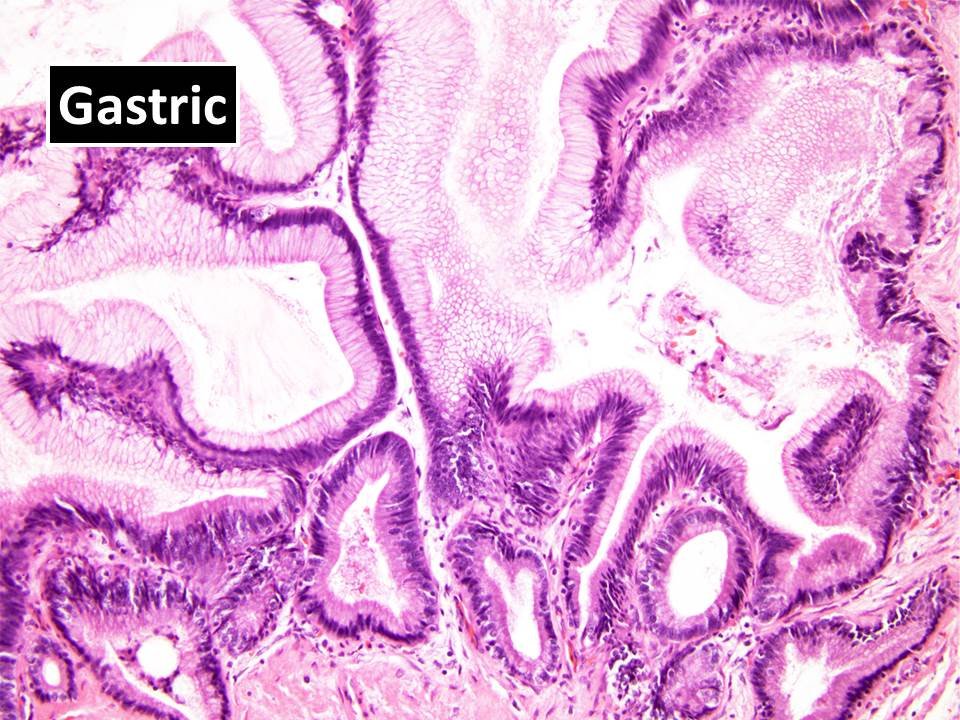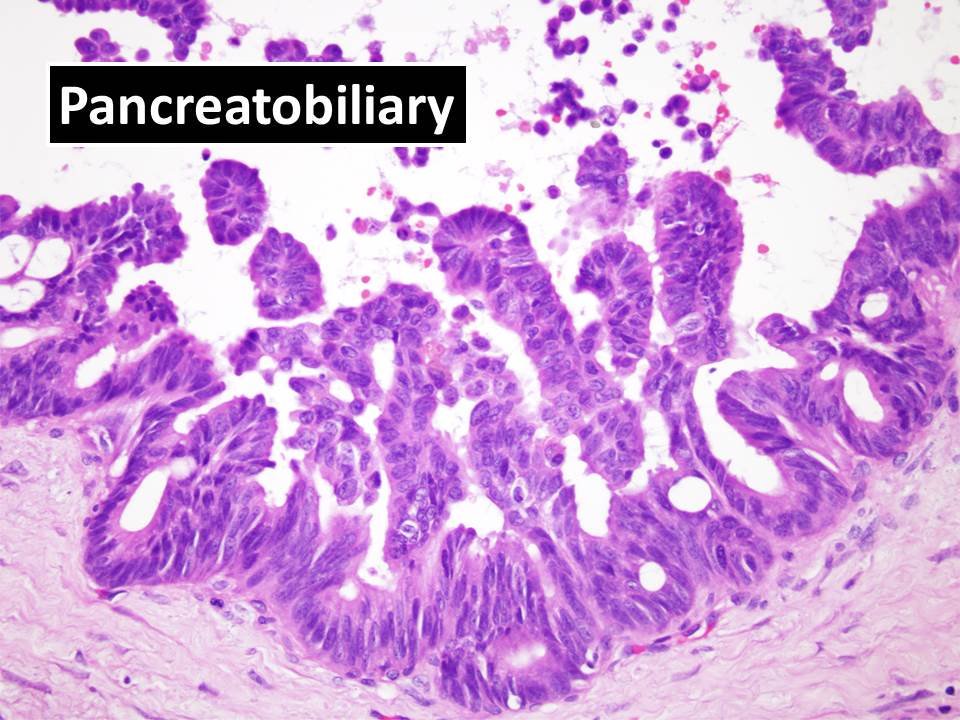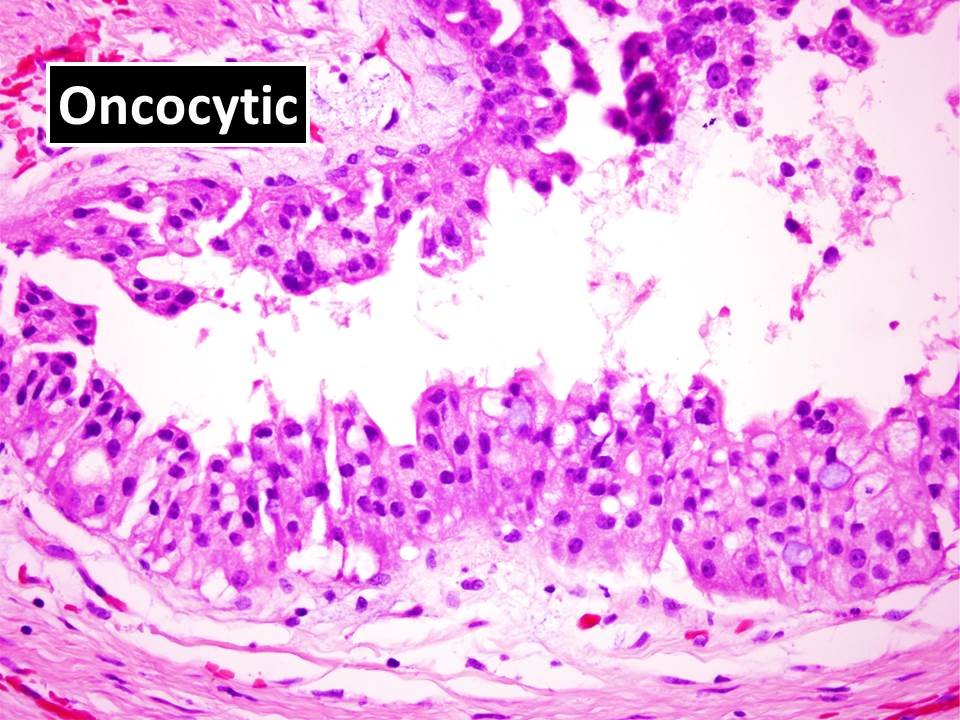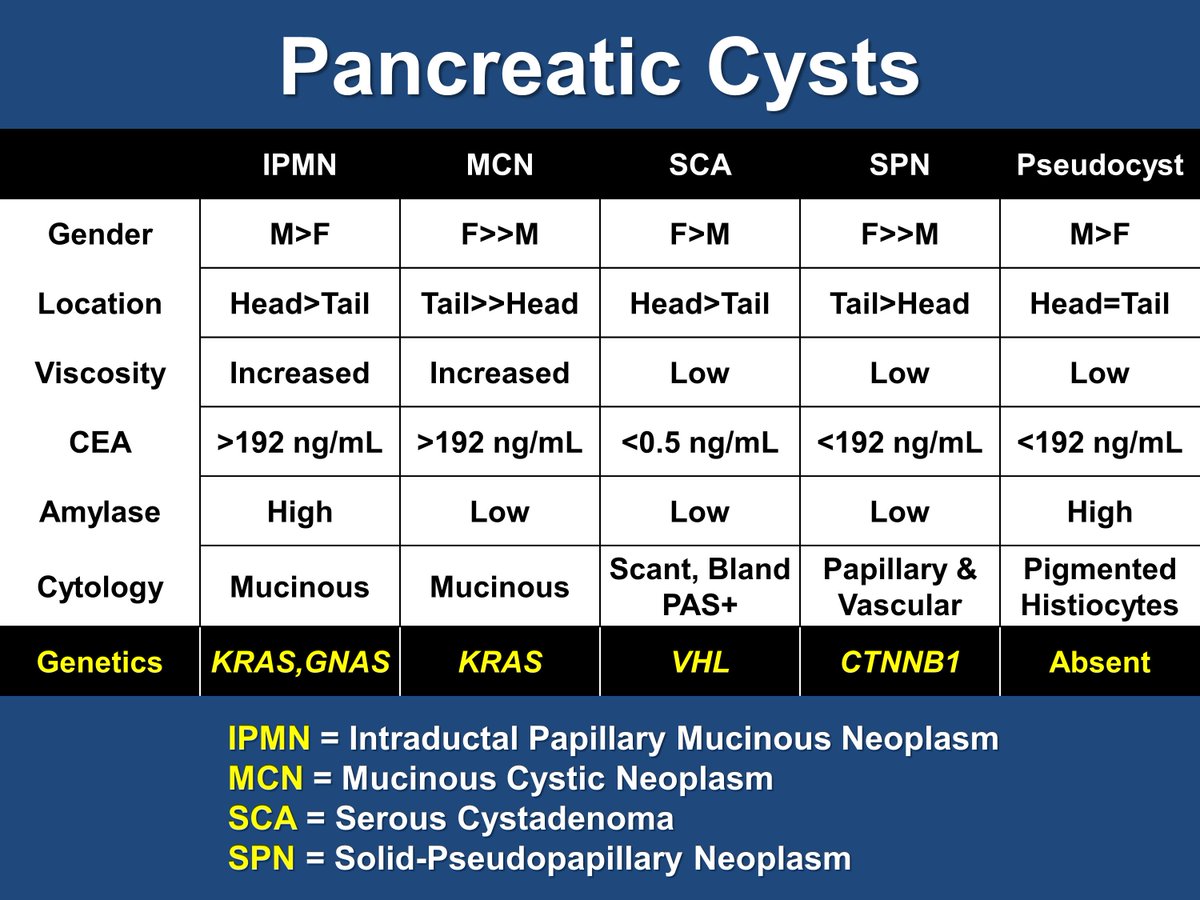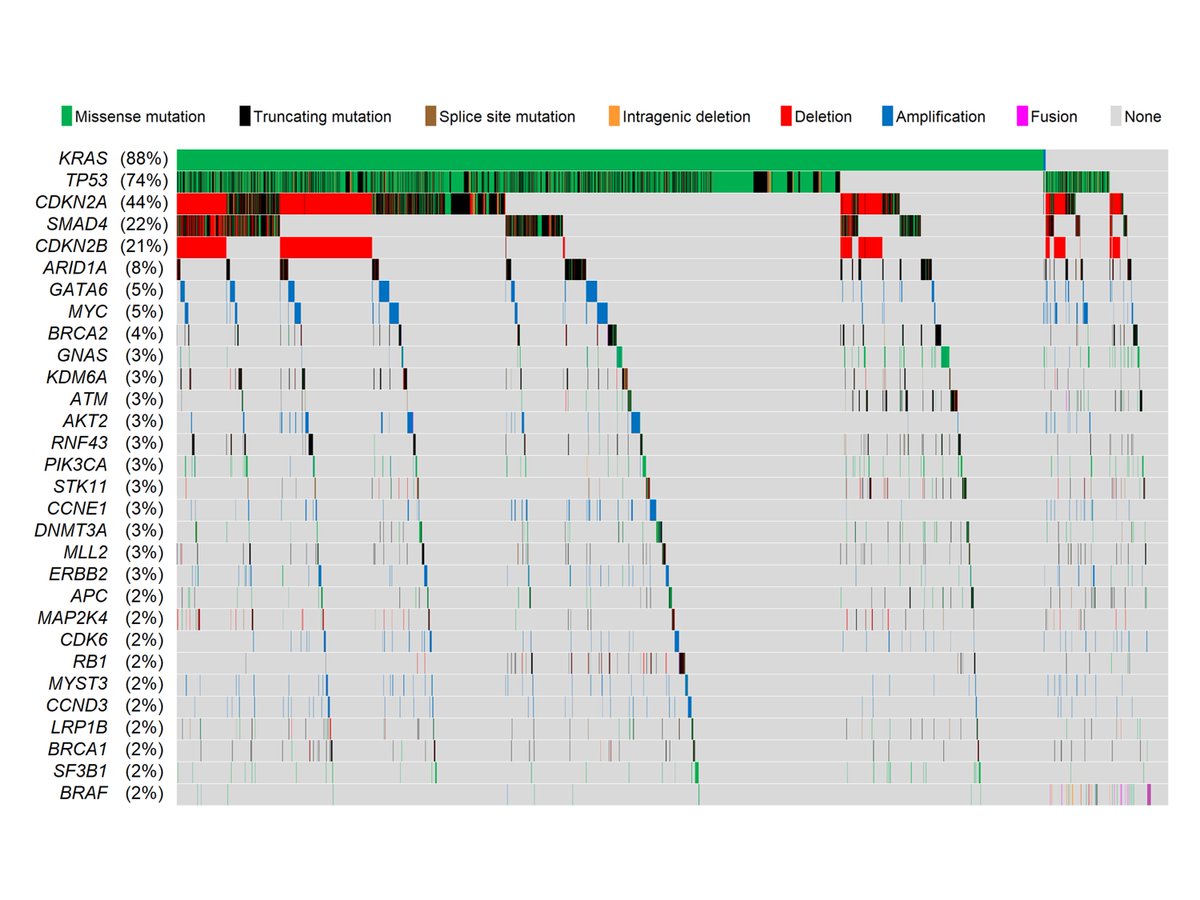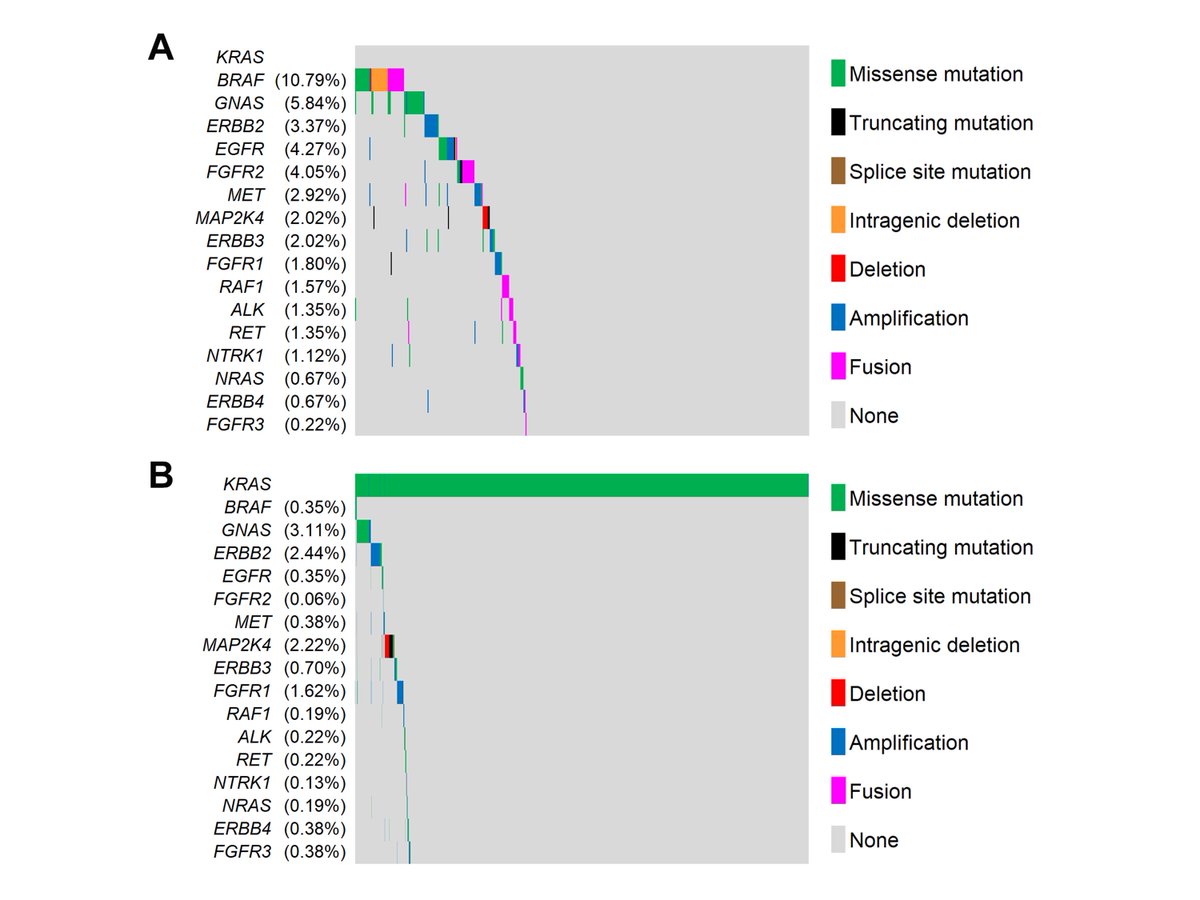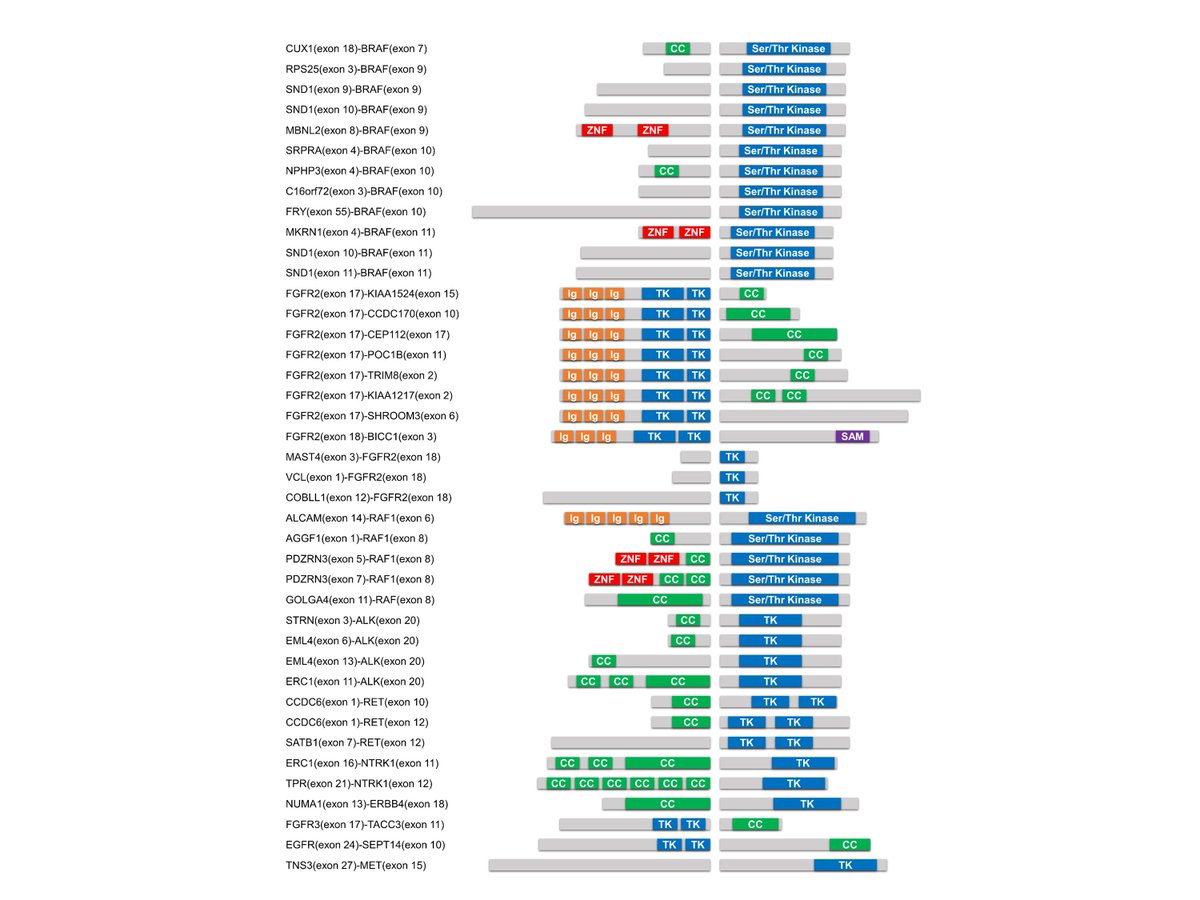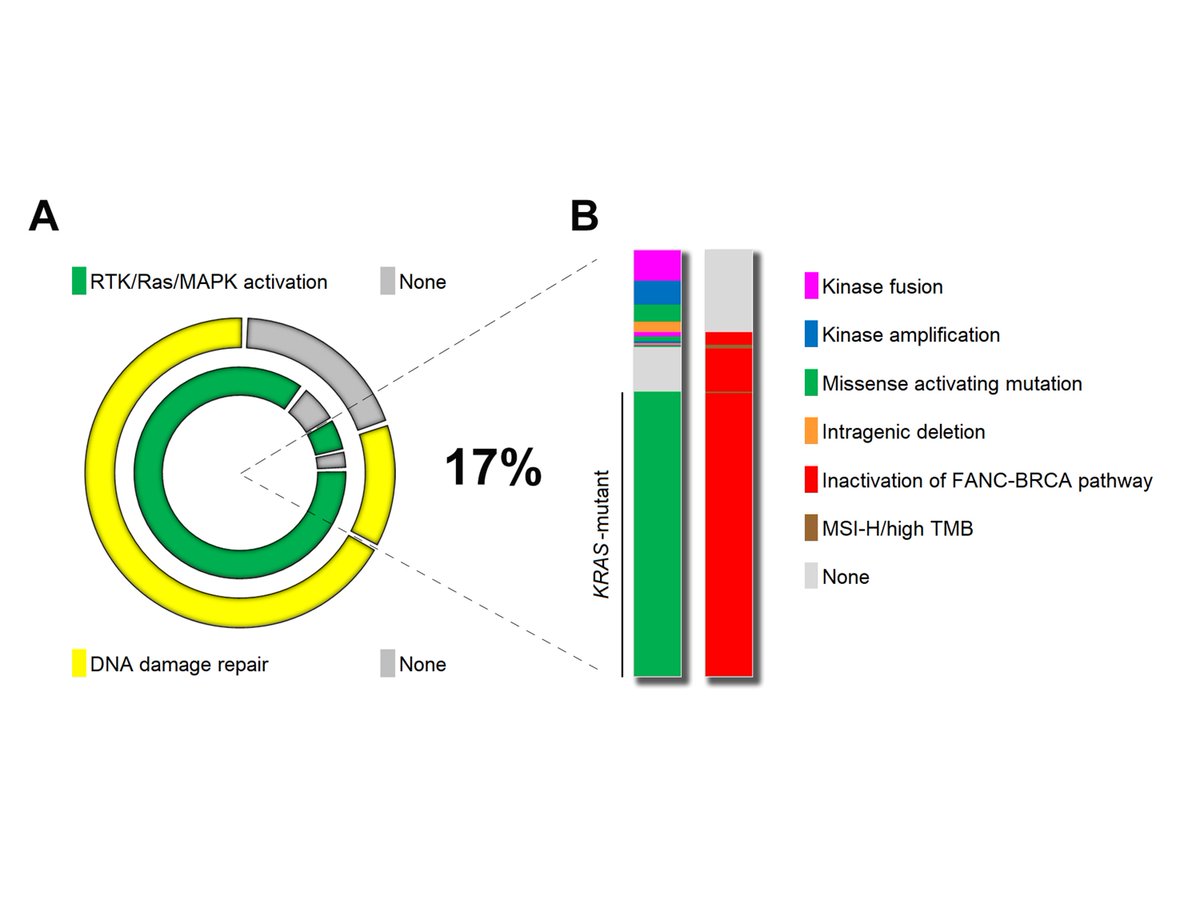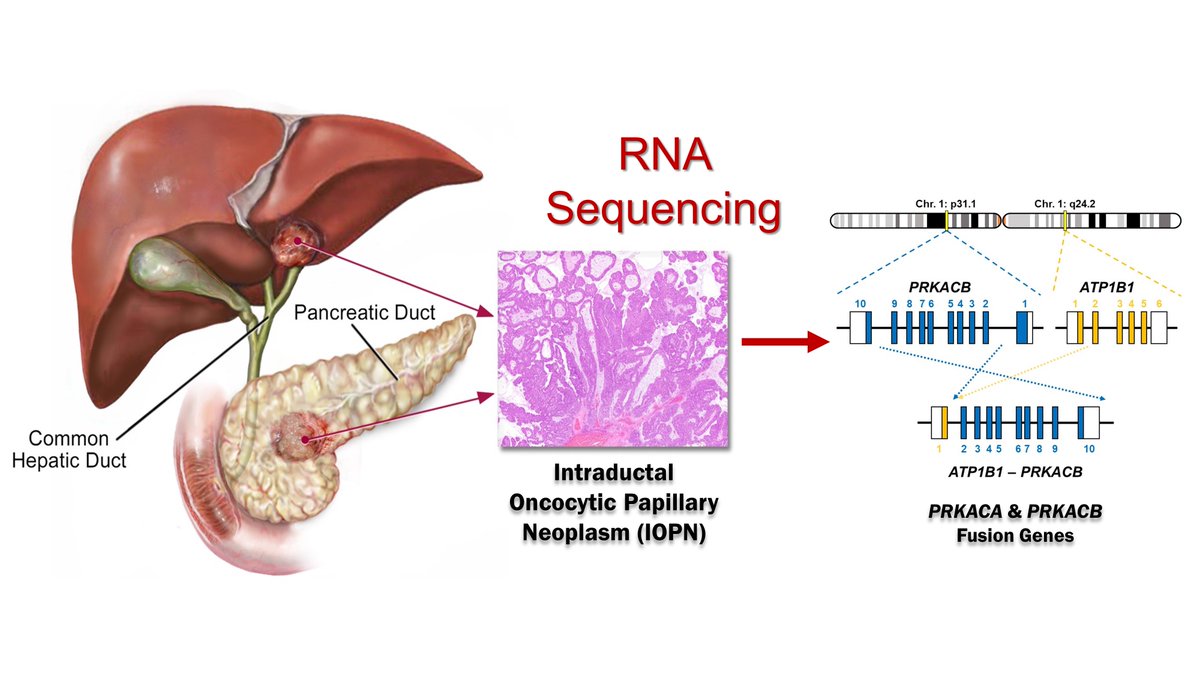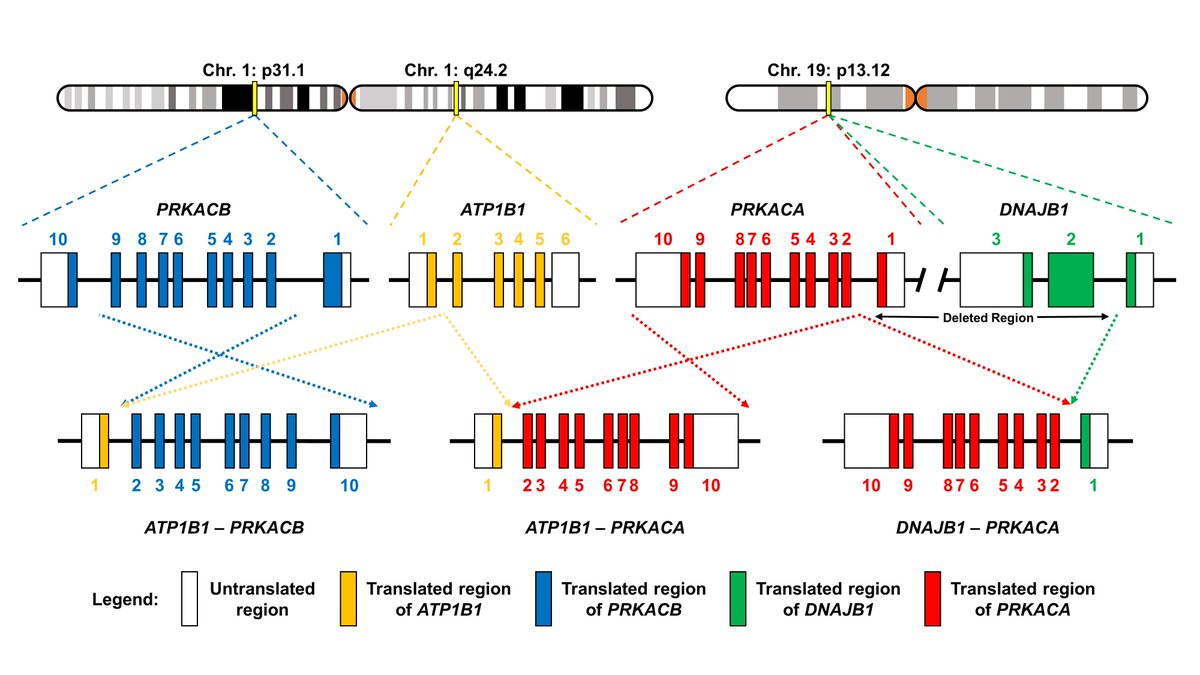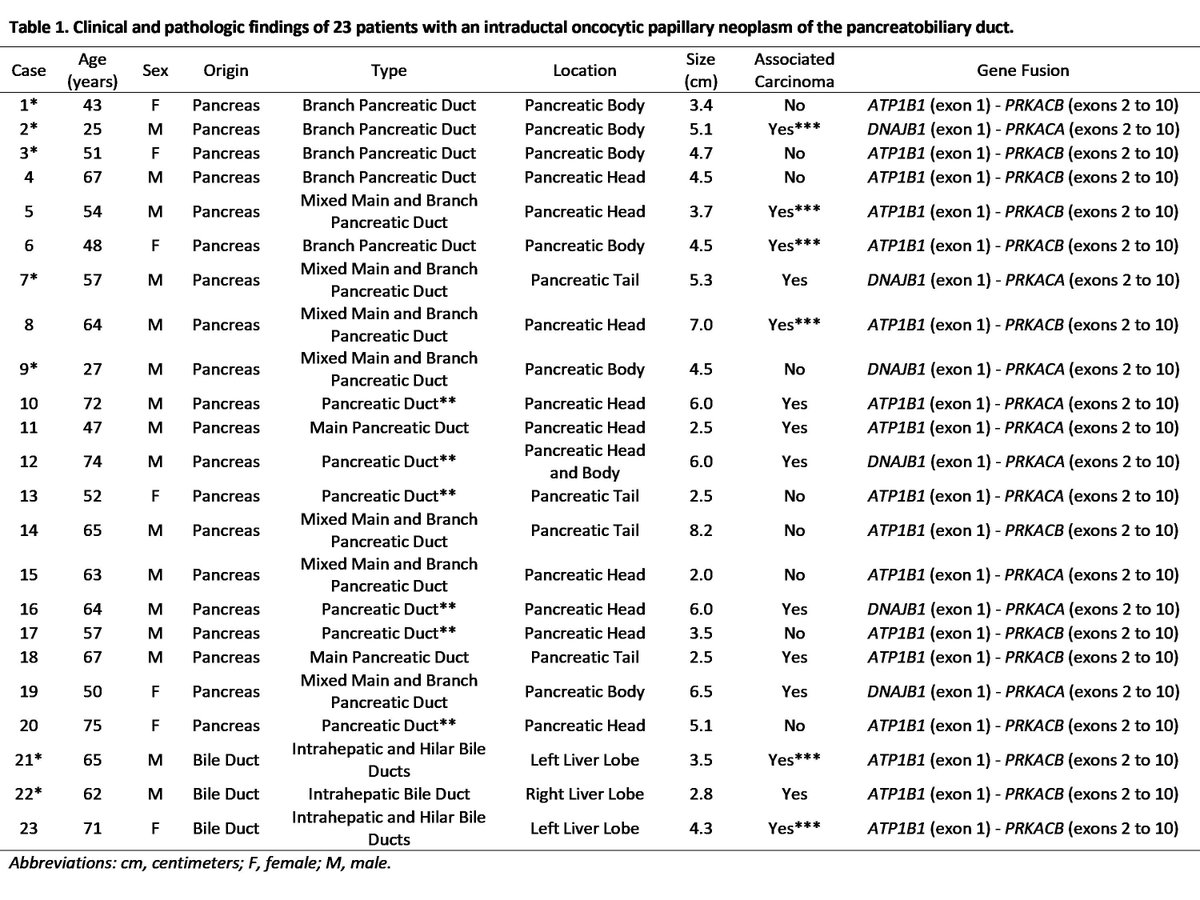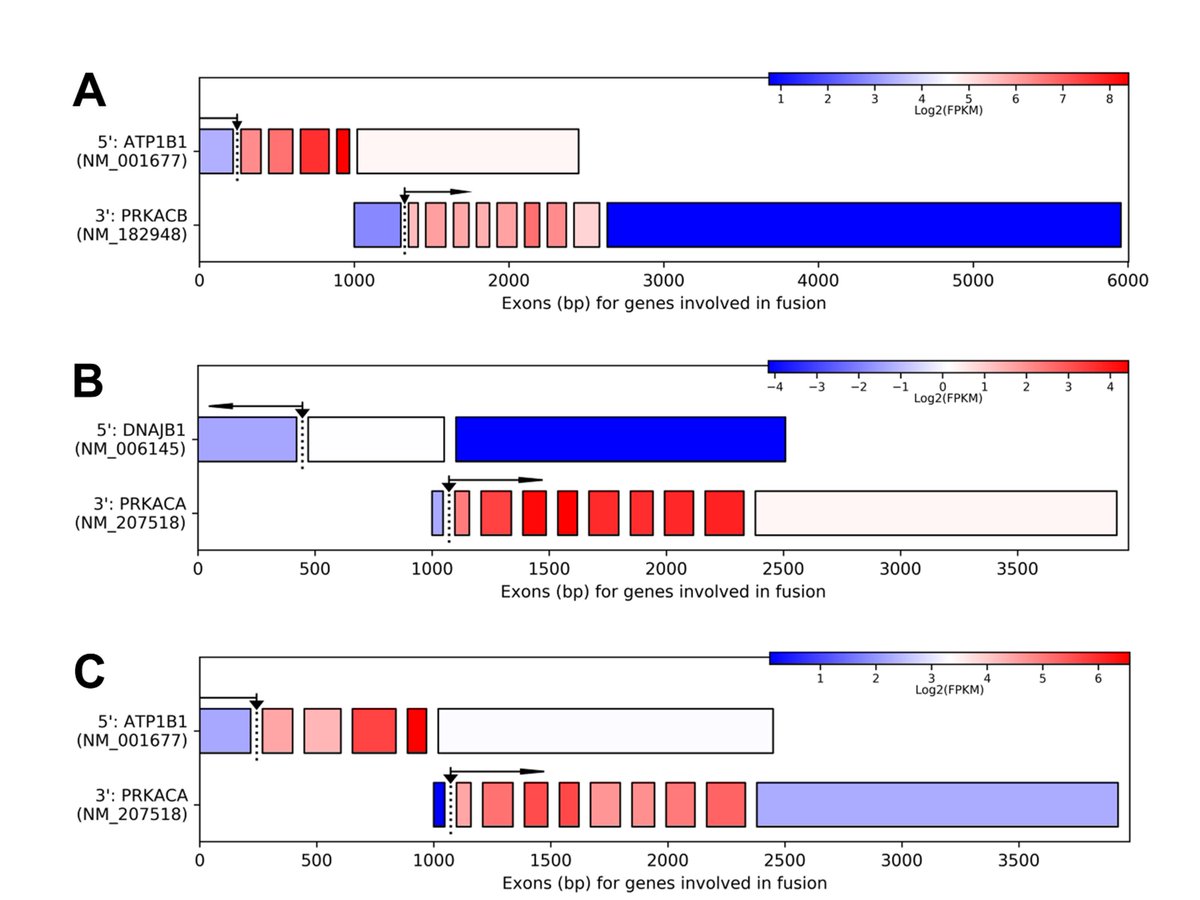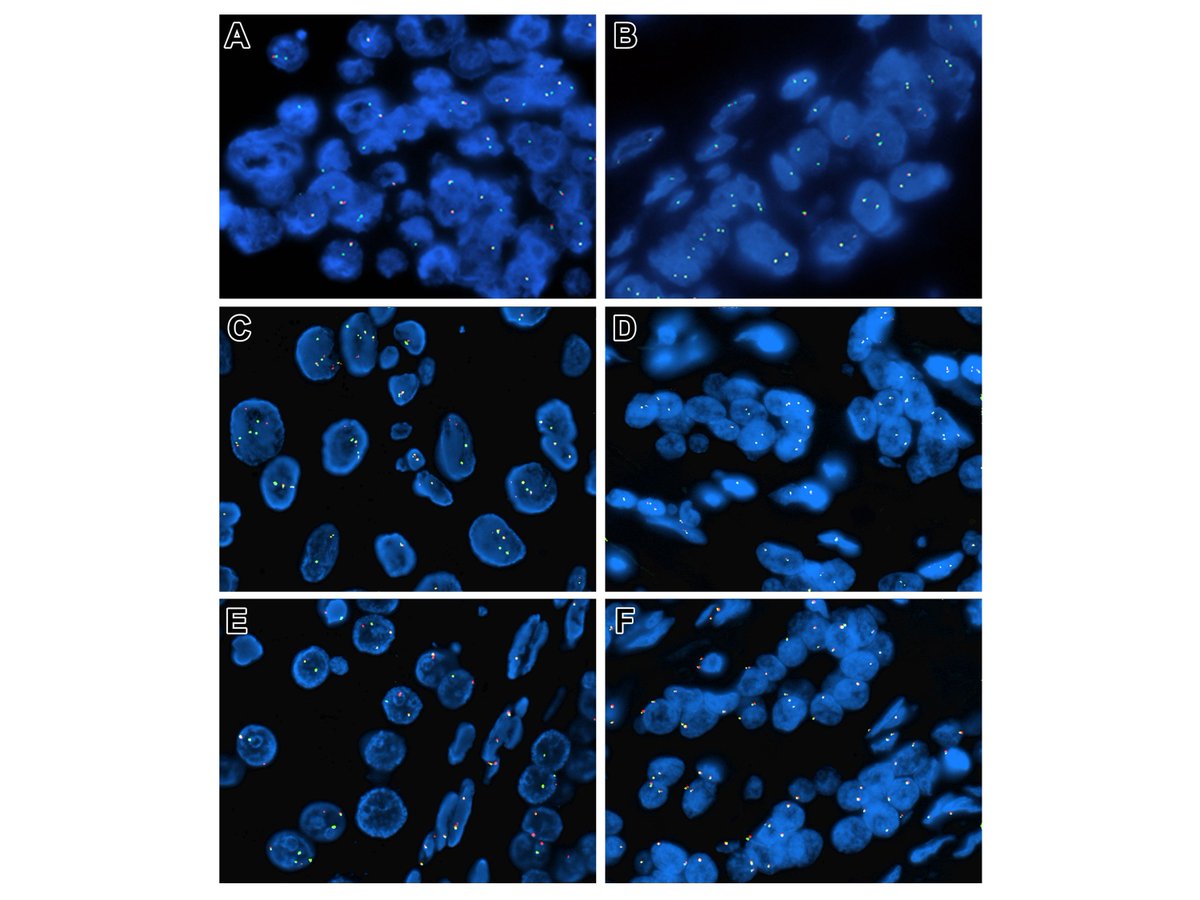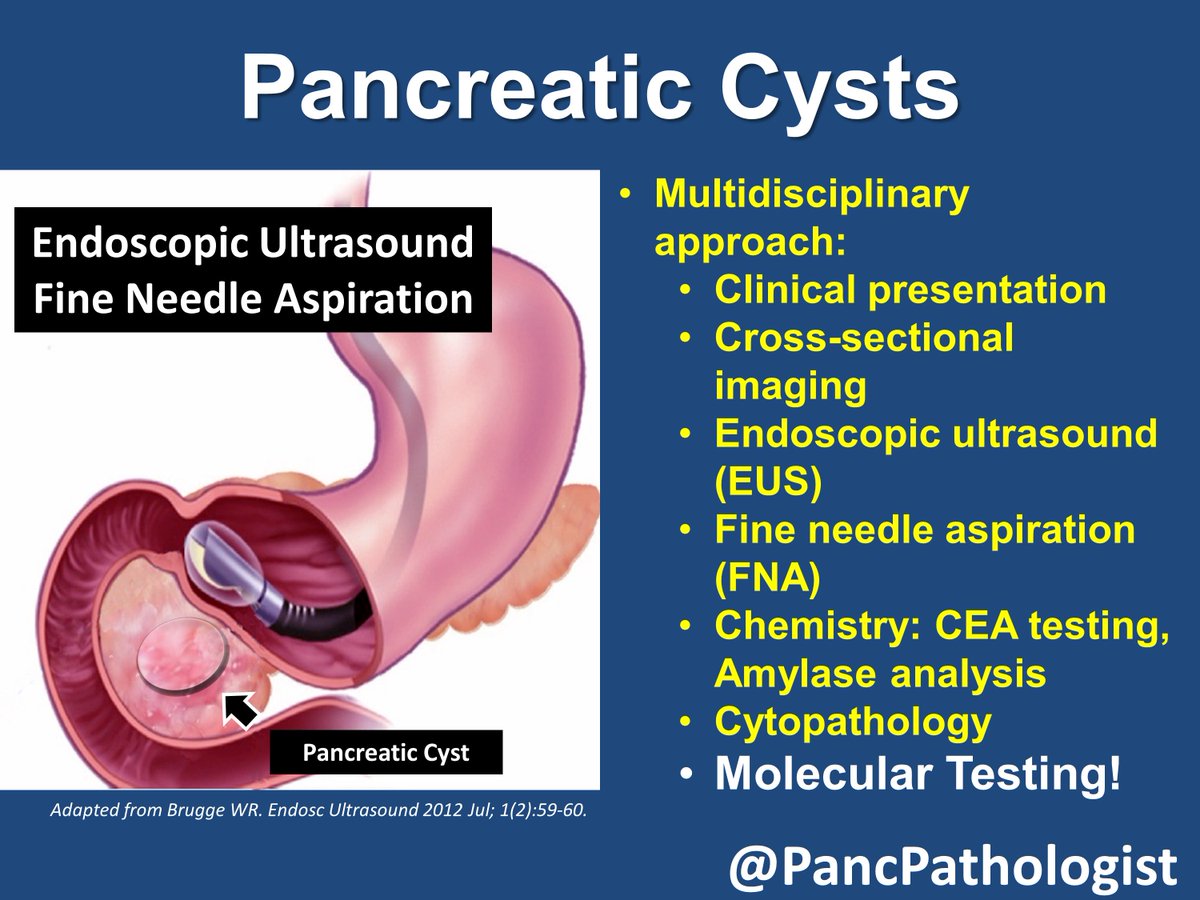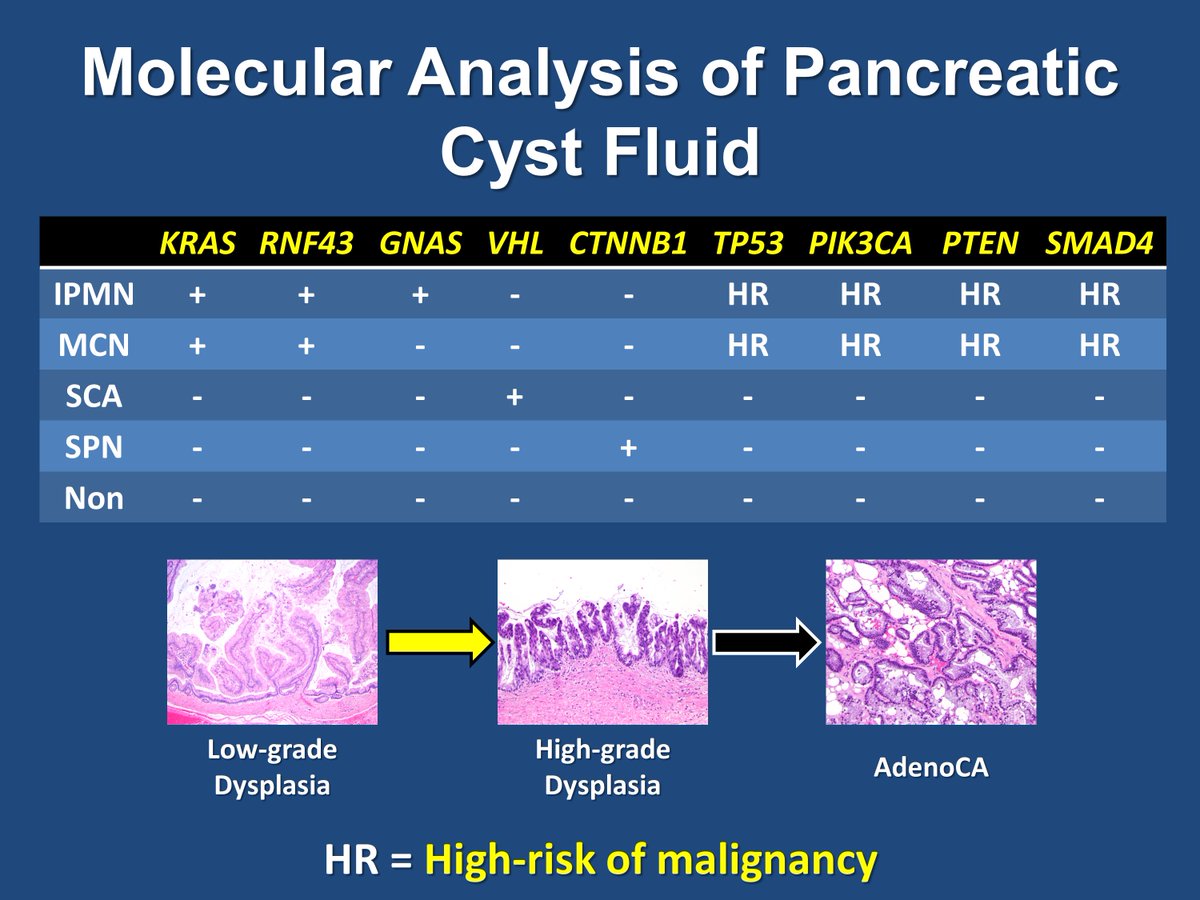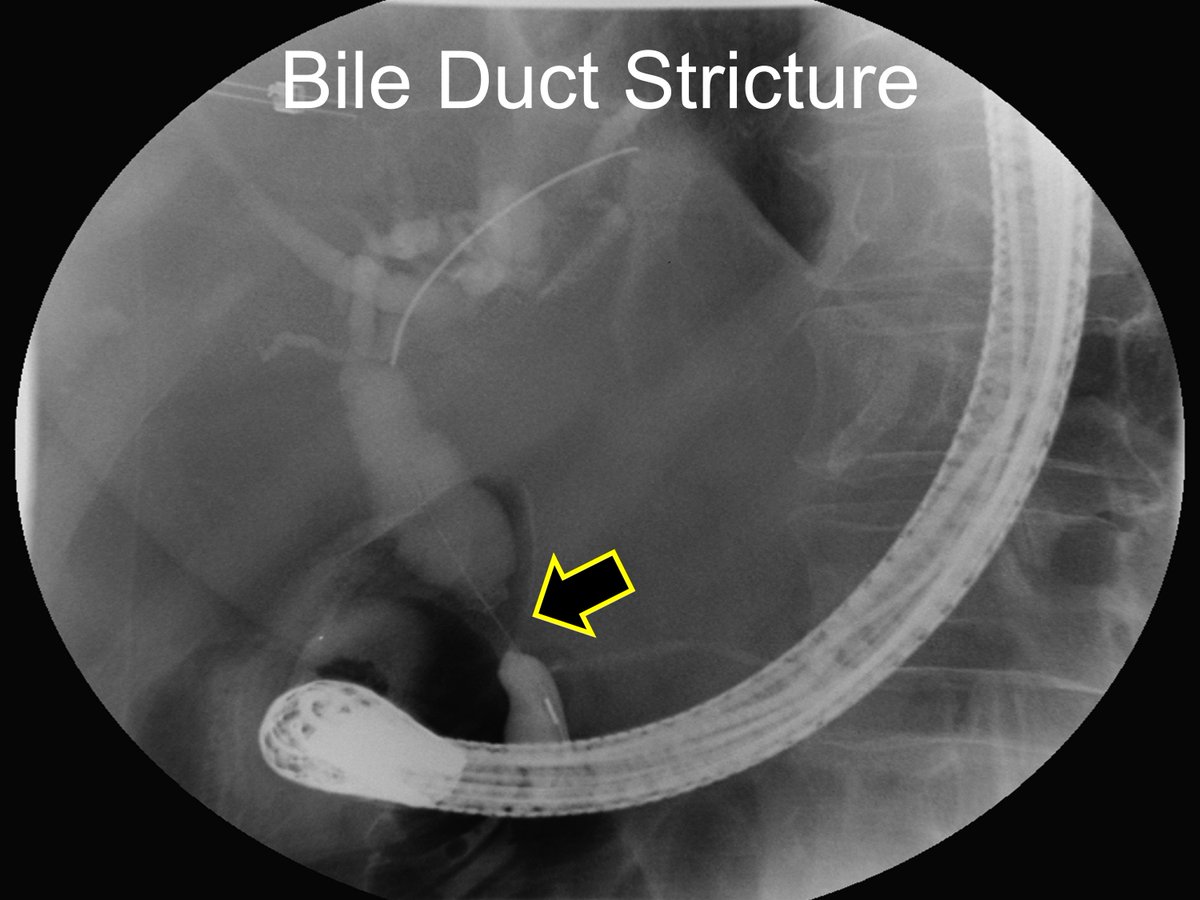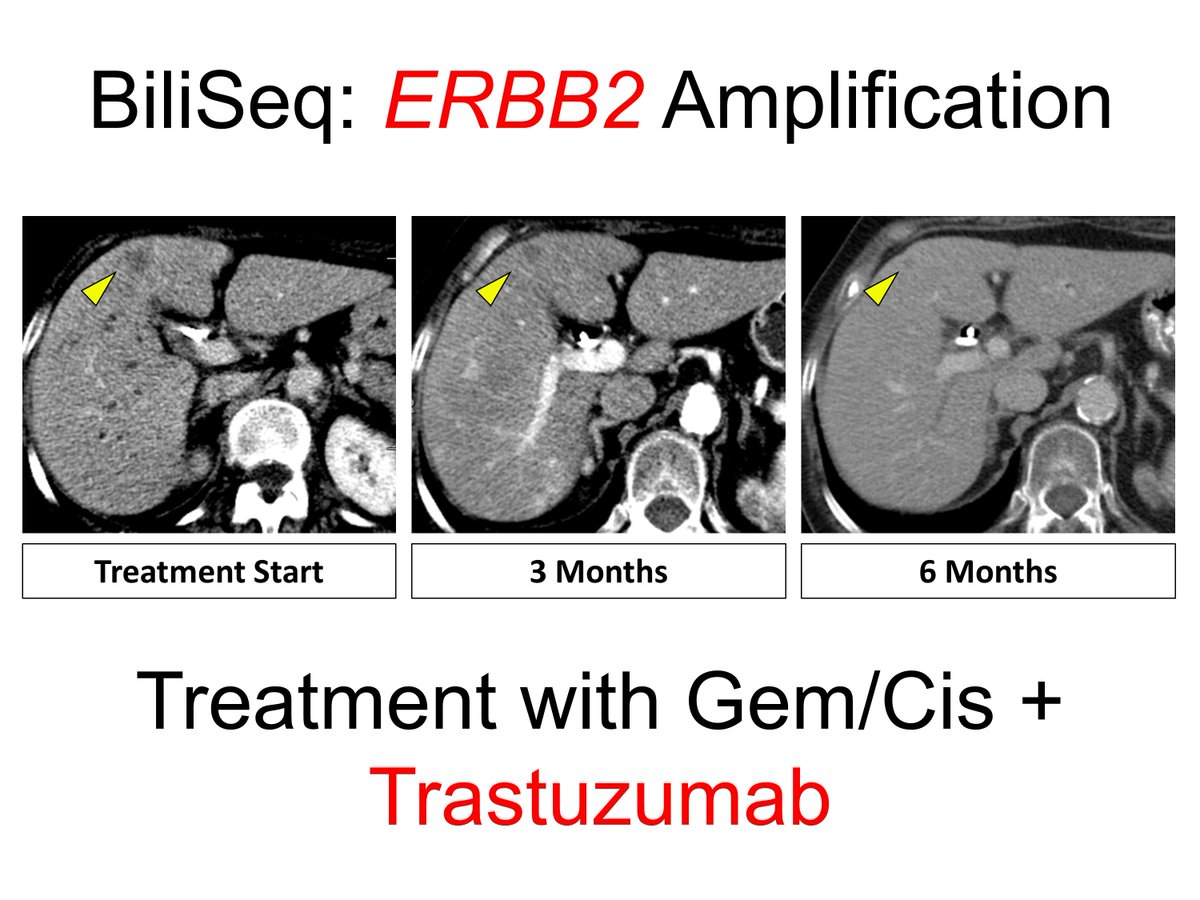1/n So letu2019s give this a try: As a #Pathology resident @JHUPath, one of the first #PancreaticCysts I ever grossed was an Intraductal Oncocytic Papillary Neoplasm. Signed it out with @RalphHruban (pictured at Cameron& #39;s 2000th #Whipple). #PancreaticCancer https://tinyurl.com/y2qehyvq ">https://tinyurl.com/y2qehyvq&...
2/n Intraductal Oncocytic Papillary Neoplasms (IOPNs) are rare, but unique neoplasms that can occur in both the pancreas and bile duct. IOPNs are characterized by flat-to-papillary epithelium with abundant, eosinophilic cytoplasm and a prominent nucleolus. #GIPath #Pathology
3/n IOPNs are cystic precursor neoplasms to both #PancreaticCancer and #Cholangiocarcinoma. #Pathology #PancreaticPath #BileDuctPath #GIPath https://tinyurl.com/y2qehyvq ">https://tinyurl.com/y2qehyvq&...
4/n Previously, pancreatic IOPNs (2010 WHO) were classified as a subtype of Intraductal Papillary Mucinous Neoplasms (IPMNs), which is a common #PancreaticCyst and frequently characterized by genomic alterations involving KRAS and GNAS. #GIPath #PancreaticPath #Pathology
5/n However, IOPNs do not harbor genomic alterations that are often associated with IPMNs (e.g., KRAS, GNAS, etc) or other #PancreaticCysts. https://tinyurl.com/y4s4es52 ">https://tinyurl.com/y4s4es52&... #MolecularPathology #PancreaticPath #GIPath
6/n Considering their unique histology and lack of similar genomic alterations to IPMNs, pancreatic IOPNs were reclassified in the 2019 WHO as their own neoplastic entity.
7/n But, #PancreaticCancers often have KRAS mutations and KRAS wild-type #PancreaticCancers can harbor fusion genes ( https://tinyurl.com/y3u6sv8b ).">https://tinyurl.com/y3u6sv8b&... Therefore, we hypothesized IOPNs could be characterized by a recurrent gene fusion or fusions. #PancreaticCysts #PrecisionMedicine
8/n Therefore, we performed RNA-based targeted sequencing and identified recurrent fusions involving the PRKACA and PRKACB gene in both pancreatic (n = 20) and biliary (n = 3) IOPNs. https://tinyurl.com/y2qehyvq ">https://tinyurl.com/y2qehyvq&... #PancreaticCyst #Pathology #PancreaticCancer
9/n The DNAJB1-PRKACA fusion gene was previously described in fibrolamellar hepatocellular carcinomas (FL-HCCs), which are also eosinophilic neoplasms. Hey, maybe these neoplasms are related? See a great review by @rondell_graham and Mike Torbenson https://tinyurl.com/y3cn2xcy ">https://tinyurl.com/y3cn2xcy&...
10/n In addition, we identified ATP1B1-PRKACA and ATP1B1-PRKACB fusion genes, which were previously described in #cholangiocarcinomas. https://tinyurl.com/y5yefn5m ">https://tinyurl.com/y5yefn5m&...
11/n We confirmed the presence of both PRKACA and PRKACB fusion genes by transcriptome sequencing and FISH. https://tinyurl.com/y2qehyvq ">https://tinyurl.com/y2qehyvq&... #PancreaticCysts #PancreaticCancer #Cholangiocarcinoma
12/n Moreover, the PRKACA and PRKACB fusion genes are unique to pancreatobiliary IOPNs, and we did not identify them in other pancreatic cysts or bile duct lesions that may mimic an IOPN. #MolecularPathology #PancreaticCysts #Pathology #GIPath https://tinyurl.com/y2qehyvq ">https://tinyurl.com/y2qehyvq&...
13/n Rearrangements in PRKACA and PRKACB can also be detected in preoperative specimens, such as pancreatic cyst fluid (PancreaSeq) and bile / bile duct brushings (Biliseq). So, we have the ability to detect IOPNs preoperatively and triage management accordingly. @UPMCnews
14/n Note, PancreaSeq has been used to help classify and stratify #PancreaticCysts from >2000 patients. And BiliSeq has been used to evaluate >400 bile duct strictures and identify actionable targets for patients with #Cholangiocarcinoma @UPMCnews
15/n But, a lot of lingering questions remain: What is the function of these fusion genes? Are they activating MAP kinase, like KRAS? Are IOPNs truly distinct from IPMNs? How are IOPNs related to FL-HCCs? And, can these genes be targeted for treatment? https://tinyurl.com/y2qehyvq ">https://tinyurl.com/y2qehyvq&...
16/n Lots more to come regarding IOPNs and IPMNs from our group (stay tuned), but thankful for funding/collaborations: @PanCAN @iPrecisionMed @PLRC_PittLiver @NatPancFdn @skyresearch, @RalphHruban @JHUPath @herbert_zeh @UTSW_Surgery @DavidBartlettMD @UPMCHillmanCC @MayoClinicPath
17/n Finally, looking forward to reading a parallel paper from @MSKPathology @CpcrMsk #Pathology #PancreaticPath

 Read on Twitter
Read on Twitter